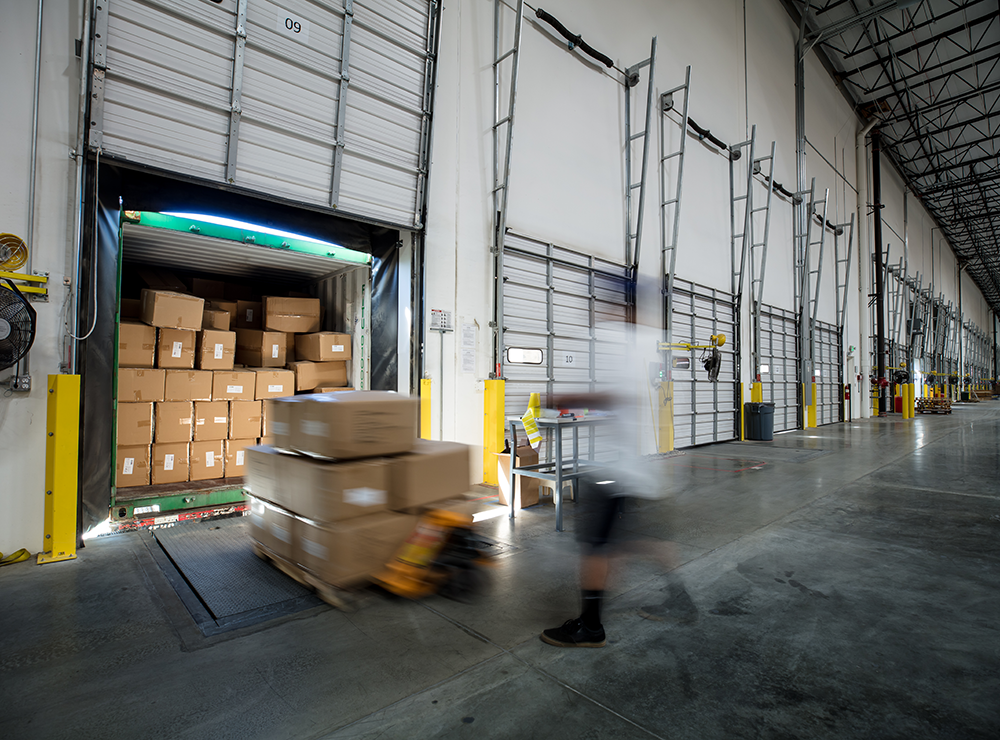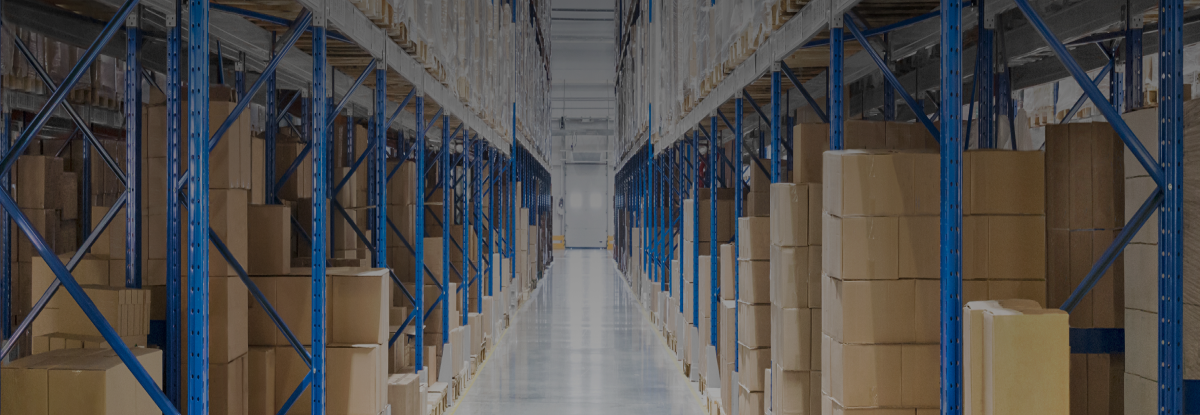
What Is a Bill of Lading? Your Essential Guide
Understand the importance of the Bill of Lading (BOL) in LTL freight shipping. Plus, discover how uShip’s Electronic Bill of Lading (eBOL) simplifies your shipping process.
Get Freight Quotes Efficient and Convenient Shipping
Efficient and Convenient Shipping Competitive Pricing
Competitive Pricing Extensive Transporter Network
Extensive Transporter Network Enhanced Transparency
Enhanced Transparency5/5
Jim
"We have been working with uShip since 2013 and have always been satisfied with the results."
5/5
Liz
"It was relatively easy to find a shipper and payment was pretty seamless."
5/5
Nate
"My shipper was great! On time both for pick up and drop off would highly recommend."
5/5
Brian
"I can find that hard to deliver item a dependable driver and research their past feedbacks on the platform."
5/5
Jason
“My truck was delivered in pristine condition, and I easily released payment to shipper via uShip's website and that was it! So easy.”
5/5
Jaime
“In every interaction with the team members they have gone above and beyond to ensure I was satisfied with the results.”
5/5
Rebecca
"Our boat arrived in perfect condition."
5/5
Jonathan
"Have used uShip twice to ship a motorcycle purchased out of state. The entire experience has been top notch each time."
5/5
Sheleigh
"Super easy and quick! Very pleased! I will certainly use this platform again."
5/5
Stephen
"uShip provides a service that is unlike anyone else on the planet and I am thankful for it!"
5/5
Alaina
"Wonderful service!!!!! Felt safe and comfortable with how they do payments too! Shipment went better and quicker than expected!!"
5/5
Tony
"The delivery went without a hitch and I cannot say enough good things about the shipper!"

Breaking Down a Bill of Lading
Explore how a Bill of Lading (BOL) works in practice by reviewing the components of this sample document. Each section plays a critical role in ensuring smooth LTL freight shipping. Plus, with tools like uShip’s Electronic Bill of Lading (eBOL), managing this essential document has never been easier.
BILL OF LADING
Shipper Information:
- Name: ABC Shipping Co.
- Address: 123 Shipping Lane, Freight City, CA 90210
- Phone: (555) 123-4567
Consignee Information:
- Name: XYZ Retailers Inc.
- Address: 456 Market St, Trade Town, NY 10001
- Phone: (555) 987-6543
Carrier Information:
- Carrier Name: Fast Freight Services
- Address: 789 Carrier Ave, Transport City, TX 75001
- Phone: (555) 654-3210
Shipment Details:
- Bill of Lading Number: BOL123456
- Date of Issue: October 1, 2023
- Origin: Freight City, CA
- Destination: Trade Town, NY
| Item No. | Description | Quantity | Weight (lbs) | Dimensions (LxWxH) |
|---|---|---|---|---|
| 1 | Electronics | 10 | 150 | 12x8x6 |
| 2 | Clothing | 20 | 200 | 24x18x12 |
| 3 | Home Goods | 5 | 100 | 30x20x15 |
Description of Goods
Total Weight: 450 lbs
Freight Charges:
- Prepaid / Collect: Prepaid
- Freight Amount: $250.00
Special Instructions:
- Handle with care. Fragile items included.
- Delivery appointment required.
Terms and Conditions:
- The carrier is not liable for loss or damage due to acts of God, public enemy, or inherent vice of the goods.
- This Bill of Lading serves as a receipt for the goods described above and as a contract for transportation
Signature:
- Shipper's Signature: _________________________
- Date: _________________________
- Carrier's Signature: _________________________
- Date: _________________________
(Note: Different types of BOLs may vary based on unique shipment requirements, such as hazardous materials or international shipping. Always verify the details align with your specific needs.)
Simplify the Process with uShip’s eBOL
Managing Bills of Lading doesn’t have to be a headache. uShip’s Electronic Bill of Lading (eBOL) streamlines the process, offering a modern, paperless solution that saves time and reduces errors. Learn more about eBOL.


Simplify Your Freight Shipping Today
Ready to take the guesswork out of freight shipping? From finding the right carrier to managing your Bill of Lading, uShip makes the process seamless.
Get Started NowBOL Glossary of Terms
To effectively manage shipping and logistics, it’s essential to understand the terminology associated with a Bill of Lading (BOL). Below is a glossary of key terms commonly found in BOL documentation:
- Parties Involved: Names and addresses of shippers, receivers, and carriers.
- Shipment Details: Includes the date of shipment, quantity, weight, value, and a description of the goods.
- Packaging: The type of packaging used for the shipment (e.g., pallets, boxes, or crates).
- PRO Number: A tracking number added by the driver upon pickup, used to monitor the shipment’s progress.
- SCAC (Standard Carrier Alpha Code): A two-to-four-letter code that identifies a transport company.
- Special Instructions: Specific directions for the carrier regarding handling, delivery, or other unique requirements.
- Payment Terms: Agreements about freight charges, such as prepaid or collect.
- Signatures: Signatures of both the shipper and the carrier, verifying receipt and agreement to transpo
- Origin and Destination: The starting and ending points of the shipment.
- Declared Value: The shipper’s declared value of the goods being transported.
- Collect Freight: Freight charges that are paid by the consignee upon receiving the goods.
- Prepaid Freight: Freight charges paid in advance by the shipper.
- PO or Reference Numbers: Numbers required by the driver at the warehouse to pick up the freight.
- NMFC Number and Freight Class: The National Motor Freight Classification (NMFC) groups shipments into 18 freight classes based on factors such as weight, dimensions, and density. (No need to worry—uShip automatically calculates your freight class based on your shipment’s details.)
Benefits of Using uShip for LTL Freight
uShip is your all-in-one online marketplace that connects shippers with trusted carriers, making LTL shipping simple, cost-effective, and flexible. With features like our Electronic Bill of Lading (eBOL), we take the hassle out of logistics. Why Choose uShip?
- Cost-Effective Solutions: Save big by comparing quotes from multiple carriers to find the best shipping rates.
- Wide Network of Carriers: Access a vast selection of carriers, including experts in handling fragile or oversized shipments.
- User-Friendly Platform: Our intuitive online platform makes it easy to book services and manage your shipments with confidence.
- Flexible Shipping Options: Customize your shipping experience with options like expedited delivery and specialized handling.
- Customer Reviews and Ratings: Make informed decisions by checking carrier ratings and feedback from other shippers.
- Added Protection: Add extra protection to safeguard your valuable or fragile items during transit.
- Dedicated Support: Enjoy 24/7 assistance from our responsive and knowledgeable customer support team.
- Convenience of Booking: Ship on your schedule with the ability to book shipments anytime, anywhere.
- Simplified Documentation with eBOL: uShip’s Electronic Bill of Lading (eBOL) eliminates paperwork, reduces errors, and streamlines the entire shipping process.

Get Started Today and Save on Shipping!
Sign Up NowVerify Your Freight Carrier’s Cargo Insurance
Protecting your valuable cargo from loss or damage starts with verifying your freight carrier’s cargo insurance. This safeguards your investment and provides peace of mind, allowing you to focus on other aspects of your business.
It’s equally important to understand the role of the Bill of Lading (BOL)—a legal document that details your shipment and outlines the carrier’s responsibilities. Ensuring accuracy in your BOL and verifying insurance coverage are essential steps for a successful shipping experience.
Steps to Verify Cargo Insurance:
1. Request Proof of Insurance: Ask your freight carrier for documentation of their cargo insurance policy.
2. Review Policy Details: Carefully review the coverage limits and exclusions in the policy to understand its scope.
3. Understand Your Coverage: Ensure the policy adequately covers the value of your cargo.
4. Check for Additional Coverage: For high-value items, explore supplemental coverage options.
5. Confirm Bill of Lading Information: Verify that the details on your BOL align with your shipment to avoid disputes.
While carrier insurance offers essential protection, it often comes with limited coverage. The uShip Protection Plan goes above and beyond, providing additional peace of mind for your shipment.
Review the Coverage Area and Pricing
When shipping your cargo, it’s important to review the carrier’s coverage area to ensure your destination is included. Additionally, examine the base rates and any potential fees. Comparing prices across multiple carriers can help you find a fair deal—but remember, the cheapest option isn’t always the best. Service quality and coverage should play a significant role in your final decision.
What to Look for in Your Review:
1. Read the Fine Print: Pay attention to the terms and conditions, including exclusions and limitations.
2. Compare Multiple Carriers: Gather quotes from several carriers to evaluate their offerings side by side.
3. Ask Questions on Coverage Details: Confirm the carrier’s ability to handle your specific needs, including service to your destination.
4. Consider Any Hidden Fees: Look out for surcharges or additional costs that might not be obvious upfront.
5. Cross-Check Coverage Limits: Ensure the carrier’s coverage aligns with the value and requirements of your shipment.
Pro Tip: For added peace of mind, uShip’s Protection Plan provides comprehensive coverage that goes beyond standard carrier insurance.

Assess Freight Carrier Transit Time
Evaluating transit times is crucial for ensuring on-time delivery and maintaining an efficient supply chain. Reliable transit times help you meet customer expectations and avoid unnecessary disruptions. Here are key tips to assess freight carrier transit times effectively:
How to Evaluate Transit Times:
1. Review Estimated Delivery Schedules: Check the carrier’s timelines to set realistic delivery expectations.
2. Analyze Past Performance: Look at customer reviews and past performance to gauge the carrier’s reliability.
3. Consider Potential Delays: Account for factors like weather, customs, or peak shipping seasons that could affect transit times.
4. Balance Speed and Cost: Weigh faster shipping options against your budget to find the right balance.
5. Communicate Your Needs: Clearly outline your shipping requirements to the carrier to prevent miscommunication and delays.
Understanding the Freight Carrier’s Service Offerings
Navigating freight carrier options can feel overwhelming, but understanding their services is key to a successful shipping experience. Whether you’re a business owner or an individual, knowing what to look for will help you make the best choice.
Key Service Offerings to Consider:
1. Shipping Rates and Options: Freight carriers offer a variety of pricing structures and delivery timelines. Compare these options to find the best match for your needs and budget.
2. Insurance and Protection: Ensure your cargo is fully protected with proper insurance coverage limits. For enhanced peace of mind, consider the uShip Protection Plan, which offers more comprehensive protection compared to standard carrier insurance.
3. Tracking and Notifications: Modern carriers provide real-time tracking and dynamic notifications, keeping you updated on your shipment’s progress at every step.
4. Customization and Flexibility: Choose carriers that offer flexible services, such as packaging consolidation, to minimize waste and share costs effectively.
5. Customer Support: Reliable customer service is essential. Select carriers with a strong track record of responsive and helpful support.

Ready to Simplify Your Freight Shipping?
Explore our services and discover the freedom, flexibility, and support you need to ship with confidence!
Get Freight QuotesEnsuring Clear Communication and Reliable Service
Clear communication and dependable service are essential for a seamless shipping experience. When choosing a freight carrier, prioritize those who offer robust tools and responsive support to keep you informed every step of the way.
Key Factors to Look For:
- Shipment Tracking Systems: Opt for carriers that provide real-time tracking, giving you full visibility into your shipment’s progress.
- Transparent Cost Breakdown: A clear and upfront breakdown of costs ensures there are no surprises and builds trust.
- Real-Time Updates: Timely notifications keep you informed, empowering you to address any issues proactively and plan accordingly.
- Responsive Customer Support: Reliable support that resolves issues promptly enhances trust and ensures a smoother process.
Carriers that prioritize transparent communication and reliable service help improve the overall shipping experience, leading to greater client satisfaction and trust in the process.
Why Choose uShip for Your Freight Carrier Needs?
We know that finding the right freight carrier can feel overwhelming, but at uShip, we make it simple. Whether you’re shipping small packages or oversized loads, our platform is designed to save you time, money, and headaches—all while giving you full control over your shipping experience.
Flexible Scheduling:
Choose shipping options that fit your timeline and budget. Whether you need expedited delivery or have flexible deadlines, we’ve got you covered.
Competitive Rates:
Our transparent pricing model helps you compare quotes from multiple carriers, so you can find the best deal without sacrificing quality.
Diverse Load Options:
From small parcels to large, complex shipments, uShip connects you with carriers equipped to handle your unique freight needs.
Advanced Technology:
Stay informed with real-time tracking and instant updates, ensuring full visibility into your shipment’s progress every step of the way.
Dedicated Support:
Our LTL support team is always available to answer questions, resolve issues, and ensure your shipping experience is seamless.
Frequently Asked Questions
What is a Bill of Lading (BOL)?
A Bill of Lading (BOL) is a document issued by a carrier to a shipper that outlines the type, quantity, and destination of the goods being shipped. It serves as a receipt for the goods, a contract between the carrier and shipper, and a document of title.
What are the types of Bills of Lading?
Common types of BOLs include:
- Straight BOL: Non-transferable and used for specific consignees.
- Negotiable BOL: Can be transferred to another party, allowing the holder to claim the goods.
- Electronic BOL (eBOL): Streamlines the shipping process, speeds up transactions, and allows for easier tracking of shipments.
Why is a Bill of Lading important?
A Bill of Lading is essential because:
- It acts as a receipt for the goods.
- It serves as a contract between the shipper and carrier.
- It provides proof of ownership for the shipment.
- It also protects both parties in case of disputes and is often required for customs clearance and insurance claims.
How do I obtain a Bill of Lading?
You can obtain a Bill of Lading from your shipping carrier or freight forwarder. They will provide the necessary paperwork based on your shipment details. Ensure all information is accurate to avoid delays or complications during transit.
Can a Bill of Lading be modified after issuance?
Yes, a Bill of Lading can be modified after issuance, but it requires agreement from all involved parties. Modifications may include updating shipment details or correcting errors. To maintain legal validity and prevent disputes, all changes must be documented properly.

Find the Perfect Carrier for Your Freight
Looking for flexible, affordable, and trustworthy freight solutions? uShip connects you with top-rated carriers to match your needs.
Compare Rates Now






